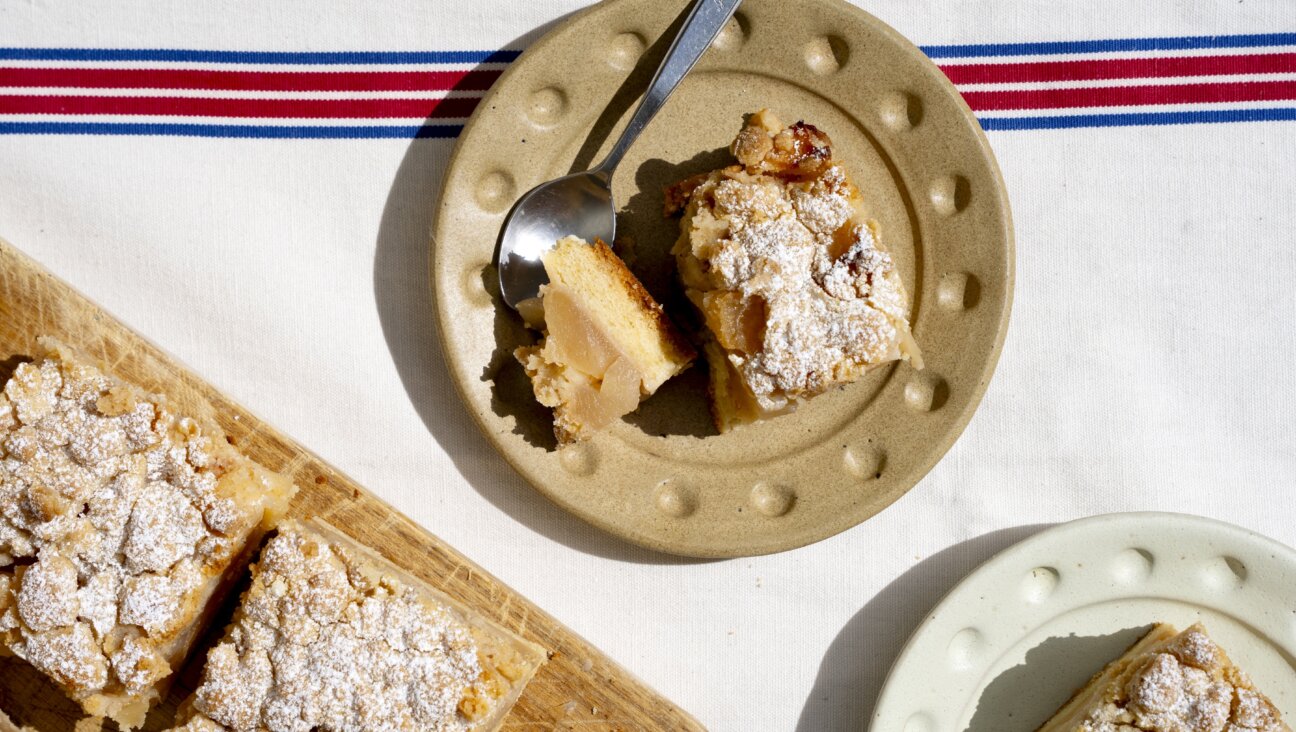A Jewish Smorgasbord Grows in Brooklyn

Image by Kurt Hoffman
Growing up a child of Polish Jewish Holocaust survivors in central Brooklyn in the 1960s, the only time I saw a raw vegetable in our kitchen was when celery, parsnips, carrots and turnips were being washed and peeled for the weekly cauldron of chicken soup that simmered on our stove on a low gas flame all Shabbos long. The soup was aromatic, thick with succulent shreds of chicken breast and served with a ladleful of tiny square lokshen noodles topped by lashes of fresh chopped dill. According to my bubbe, the secret ingredient was a single foil packet of George Washington chicken broth powder, which seemed her sole concession to her American naturalization.
My bubbe ruled over our kosher household as my mother was stricken during my infancy by a stroke that left her paralyzed on her left side. Though my mother used her good hand to assist with food preparation, our narrow apartment kitchen, with its double sets of dishes, silverware and cooking pots, was my bubbe’s domain and the center of her existence. If by chance I accidentally used a meat fork for a milk entree, she would bury the soiled implement in the potted plant sitting on the window sill overlooking our concrete playground. And the first question she asked when I woke up in the bedroom we shared was what I wanted for dinner. Though I hungered for Swanson TV dinners and Fluffernutter sandwiches, she prepared each meal from scratch; our freezer was filled with all kinds of offal wrapped in white butcher paper marked with the name of each enclosed organ.
Our daily cuisine was a smorgasbord of Eastern European Jewish delights — from lamb brain sweetbreads to chicken feet fricassee to homemade chopped liver, chicken soup with feather-light matzo balls or hand-rolled meat kreplach. My bubbe’s renowned gefilte fish required a day trip on numerous forms of public transportation to the Fulton Fish Market, where it was said that she required the fishmongers to turn over every fish filet before she was satisfied with her choice of carp and halibut.
But her piece de resistance, the delicacy that defined her as the master of shtetl cuisine, was p’tcha, jellied calf legs, a dish that has all but disappeared from today’s Jewish tables. Prepared only for such special occasions as visits from Israeli relatives or 25th wedding anniversaries, its humble ingredients — calf feet, garlic, onions, vinegar, salt and pepper — required hours of rapid boiling to liquefy the bones to elixir. The sour scent of melting marrow smelled like boiling shoe leather and couldn’t be camouflaged even by the most potent air freshener.
While my relatives swooned when tasting those wobbly gelatinous squares the color of jellyfish, I tried to overcome my aversion, believing that highly coveted delicacies like caviar and p’tcha were tastes acquired by sophisticated palates. But no matter how hard I tried, I was never able to dissociate this prized forshpeys (appetizer) from the steaming farinaceous aroma that suffocated our apartment, filling the refrigerator with its distinctive brew.
While honored guests kvelled over the brilliance of my bubbe’s culinary masterpiece, I opted for potato latkes with sour cream, explaining that such a rare treat should only be savored by those who appreciated it most.
Cheryl Pearl Sucher is a novelist, essayist and reviewer who commutes between New Zealand and Brooklyn.
P’tcha
adapted from the “Encyclopedia of Jewish Food”
2 calf’s feet (2-2 1/2 lbs.) cleaned and cut into 2 inch pieces
2 medium yellow onions, sliced
2 cloves garlic
2 tablespoons white wine vinegar or fresh lemon
1 1/2 teaspoons table salt
1 teaspoon whole black peppercorns
7 cups water
8 cloves garlic, minced
1) Place feet in a large pot, cover with cold water and bring to a boil. Boil until scum rises to the surface, about 10 minutes. Drain off water, rinse feet.
2) Place feet, onions, garlic cloves, vinegar, salt and pepper in a clean large pot. Add fresh water to cover by 1 inch. Bring to boil, cover, reduce heat and simmer until meat falls off the bone, at least 4 hours.
3) Remove bones from pot; remove any meat from bones and chop. Discard bones. Strain the liquid, stir in the meat and minced garlic.
4) Pour mixture into shallow 2 quart glass baking dish. Cover with plastic wrap and refrigerate until firm, at least 8 hours. Serve chilled and cut into pieces.

















